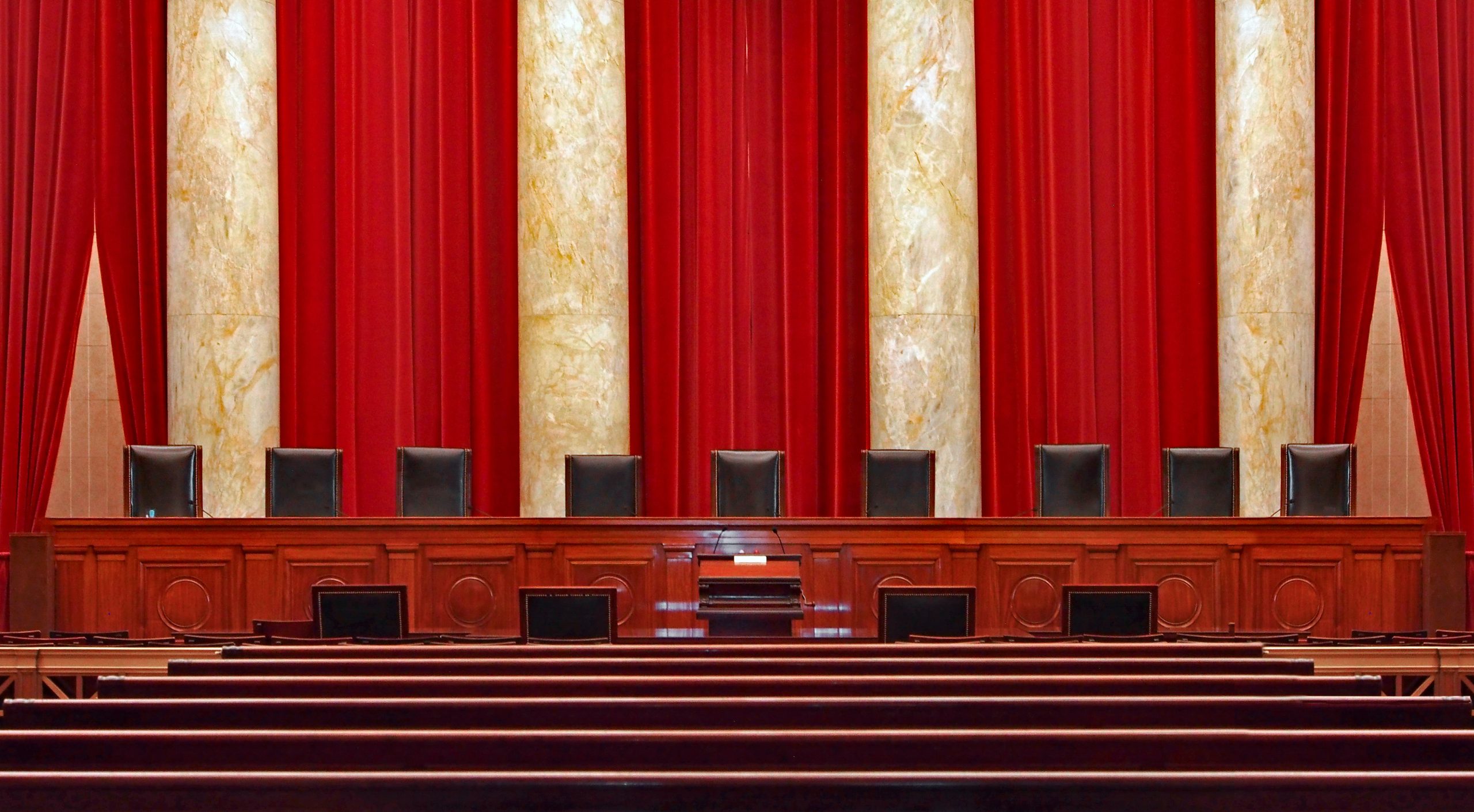Symposium
The court after COVID: A recipe for oral argument reform

on Jul 28, 2021 at 10:12 am

The Supreme Court has not yet announced whether it will return to normal operations when the 2021-22 term begins in October. This article is the first entry in a symposium about how the coronavirus pandemic changed the court — and which of those changes are worth keeping.
Steven V. Mazie covers the Supreme Court for The Economist and is professor of political studies at Bard High School Early College in Manhattan. His most recent book is “American Justice 2015: The Dramatic Tenth Term of the Roberts Court.”
Last spring, when COVID-19 closed its doors, the Supreme Court picked up the telephone. The justices postponed the March and April 2020 oral arguments and retreated to their homes to hear cases via audio-only teleconference in May; all seven argument sittings for the following term were conducted by telephone, too. With the pandemic beginning to recede and all the justices vaccinated, it seems likely that on Oct. 4 — the opening day of the 2021-22 term — the Supreme Court will reconvene in its majestic courtroom across from the Capitol.
It will be cause for celebration when the justices hear cases in person again with lawyers, members of the press and the public jostling for seats. At their best, these arguments are remarkable displays of intellectual drama often focused on key legal and political issues of the day. Having them in person again will be a relief — and we’ll get to finally see Justice Amy Coney Barrett inside the courtroom in the chair on the far-right position on the bench. But it will be a wasted opportunity if the justices simply revert to business as usual. As President Joe Biden’s court-reform commission contemplates legislative changes to the Supreme Court’s structure and powers, the justices’ experience over the past year could inspire internal reforms.
To begin, consider public access to the court’s proceedings. Before COVID struck, the Supreme Court released audio recordings of oral arguments on Fridays. That several-day delay — which was never explained or justified — meant that only the couple of hundred people in the courtroom would get to hear the discussion live. In a blow for transparency, the justices began livestreaming their telephonic arguments last year, enabling interested Americans to tune in on C-SPAN. There is no reason why the justices shouldn’t keep the livestreams coming when they emerge from their home offices.
And then there is the format. The venue change forced oral arguments to move from free-wheeling affairs with rapid-fire questions from every direction to orderly turn-taking, with justices asking questions of lawyers one-by-one in order of seniority. Some long-time court-watchers panned the pandemic format. Lyle Denniston, a journalist who has covered the court for six decades (including for SCOTUSblog), calls it an “awful experiment” in pinched colloquy. Oral arguments represent “the first time the justices talk to each other seriously” about cases, Denniston says, and it is “vital” they return to a format that allows for genuine give-and-take.
Raucous exchanges unmediated by a speaker’s list should be restored when the courtroom opens back up. Chief Justice John Roberts, who runs the show, will get to look up from his stopwatch. He will no longer face the awkward task of calling on the next justice to speak by interrupting a colleague or an advocate and disrupting the flow of the argument. Spontaneity will be restored: Justices will be able to build on one another’s questions, or challenge a lawyer’s claim, without twiddling their thumbs in a queue.
Yet the seriatim questioning of the past year, coupled with the advent of live audio, has had its virtues. The structure has afforded the court a sense of greater legitimacy. Before the pandemic, justices often saved their fire for the lawyer whose side they are predisposed against — and stayed on the sidelines or lobbed softballs at the lawyers they agreed with. But over the past year, justices left and right typically asked pointed questions of both sides. This has made it harder to guess how a case will be resolved. But it has lent an air of enhanced impartiality to the proceedings. And whereas Justice Clarence Thomas had been famously quiet for most of his tenure — averaging less than a minute of air time per year from 1991 to 2019 — the orderly questioning has thrust him into the fray. The silent justice unmuted himself, speaking in every hearing and often (in part because he spoke early in the queue, just after Roberts) shaping the discussion.
No teacher happening on a way to encourage wallflowers would abandon the inclusive method at the first opportunity. Nor should the Supreme Court give up on each justice having a few dedicated minutes to ask questions. The justices, the lawyers and the public would all be edified by a format that continues to reserve space for all nine justices’ queries. So when it returns, the Supreme Court should consider a hybrid approach: a round of initial questions from each justice followed by the traditional free-for-all. This could afford each of the nine an opportunity to lay out concerns before the restraints are lifted for more searching colloquy on details that demand a deeper dive.
In a rare impromptu pivot on March 24, Roberts demonstrated the fruits of this approach. In Caniglia v. Strom, a case asking whether police may enter a home without a warrant to fulfill a “caretaking” role, the chief loosened his tie and set justices free to ask additional questions out of turn for the final 10 minutes of the hearing. The sky did not fall: Roberts led with a question, followed by queries from Justices Elena Kagan, Neil Gorsuch, Brett Kavanaugh and Sonia Sotomayor. If this mixed format can work on the phone, it can fly in person.
But if the justices are to conduct hearings marked by both order and spirit, they will need more time. Last May the first telephonic argument (in a trademark case) lasted 15 minutes longer than the usual 60. In November, California v. Texas, the ill-fated challenge to Obamacare, was slated for an expanded 80 minutes but ran for two hours. In this year’s March session, six mostly run-of-the-mill arguments averaged about 85 minutes.
For its first six decades, the court imposed no time limit on oral arguments; hearings went on for days. In 1849, a four-hour cap was introduced, tightened in 1920 to two hours. In 1928, Chief Justice Charles Evans Hughes lamented that too much time is “unavoidably wasted … listening to futile discussion.” And since 1970, the crisp one-hour limit has governed all but a few particularly complex or high-profile cases.
As things slowly return to normal, the court should stay flexible and open-minded. Keeping live audio, a long-overdue way to give the public access to its hearings, is a no-brainer. Formalizing a de facto lengthening of oral arguments to 90 or so minutes to accommodate an improved format would hardly be a revolutionary move (and might appeal to the originalists on the bench). The justices are not pressed for time: Whereas the court reviewed 150 cases a year as recently as the 1980s, they have heard only around 60 in recent terms.
The Supreme Court is famously resistant to change. But when the justices finally slide into their high-backed leather chairs behind the bowed bench, they should not miss the opportunity to reform their practices.


